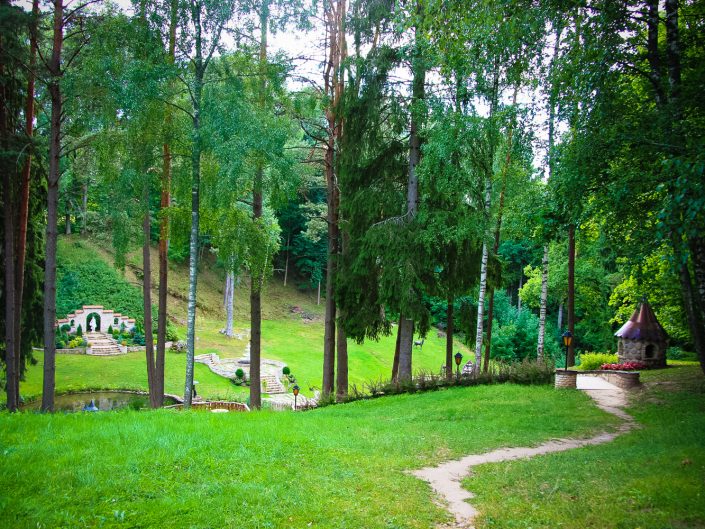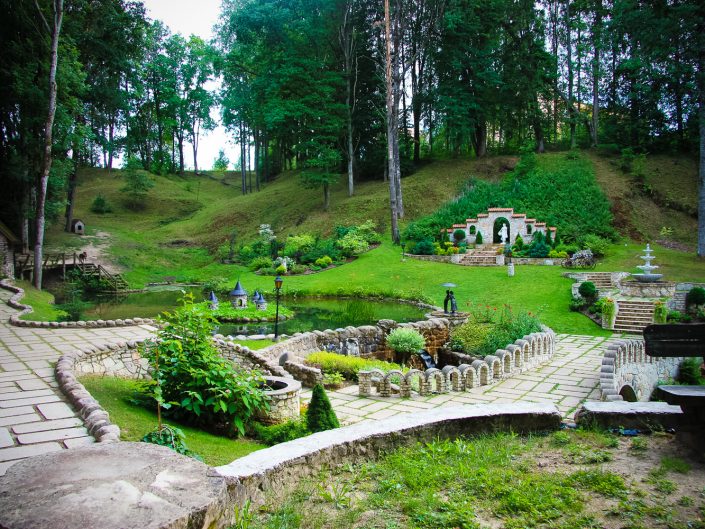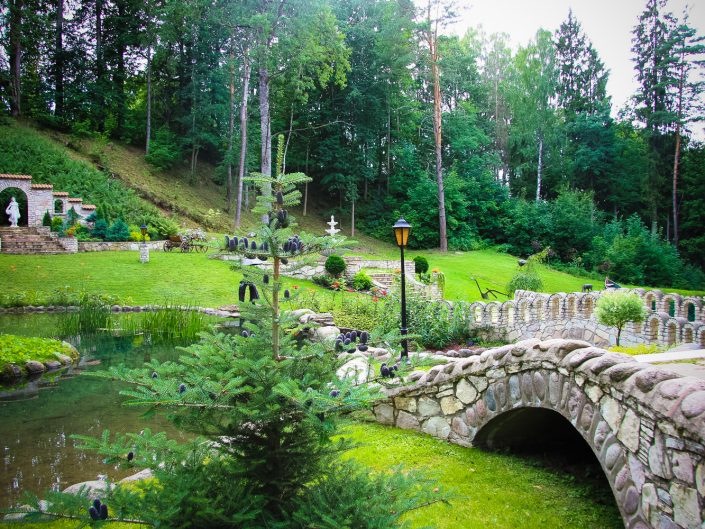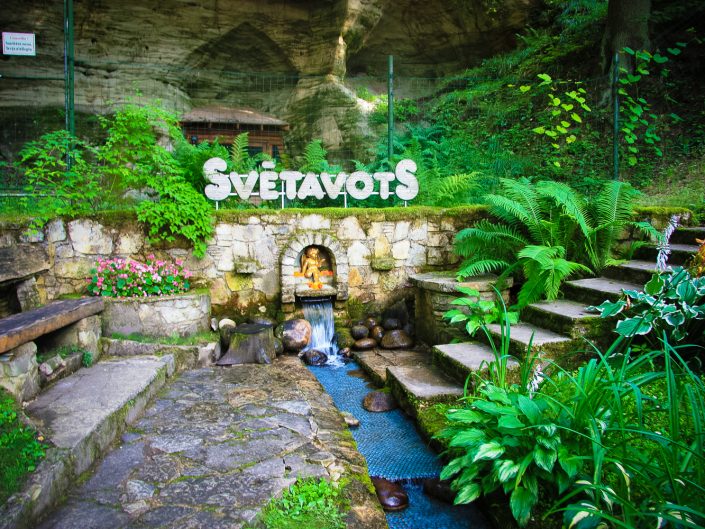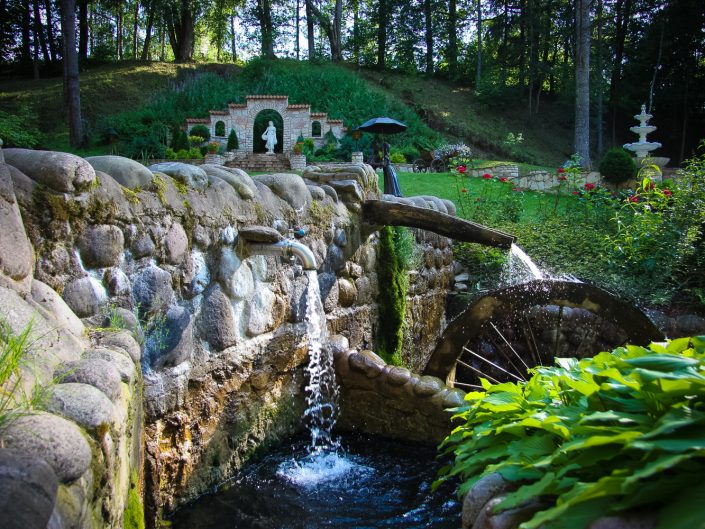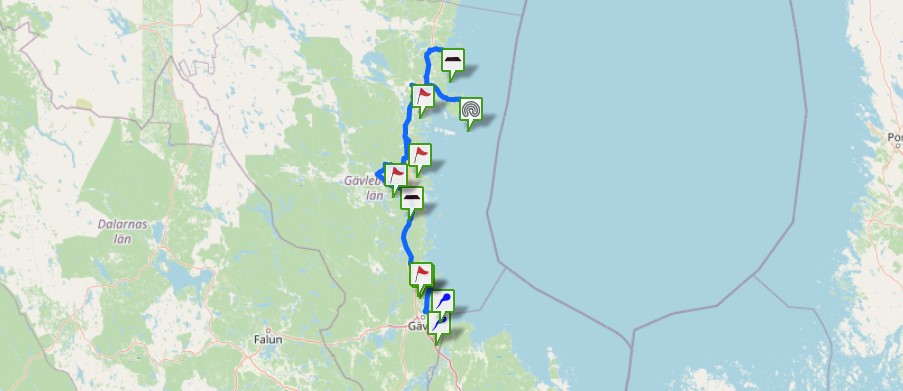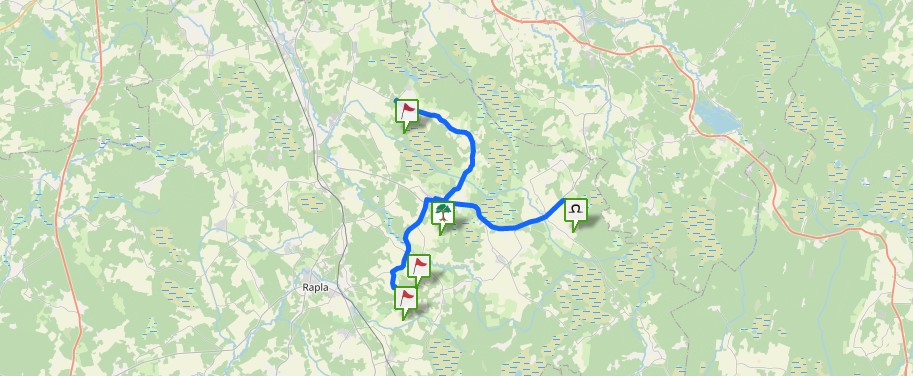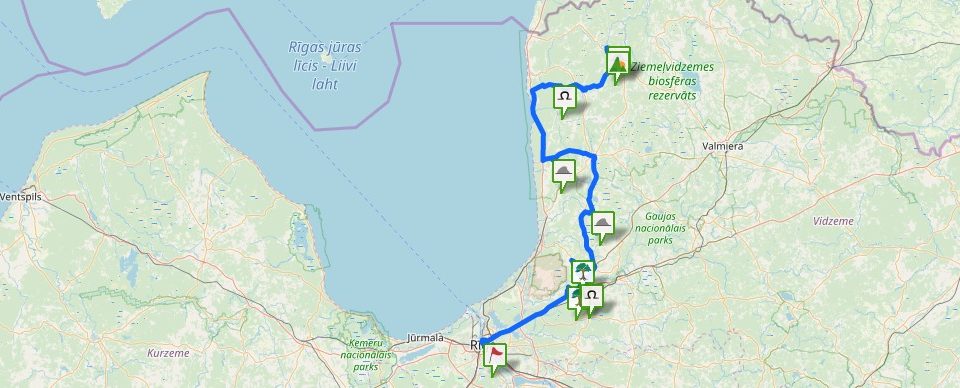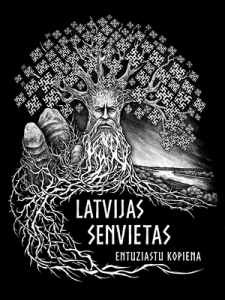The Holy Spring Cave is the first cave in Latvia mentioned in scientific literature. Already in 1764 it was examined by ethnographer G. F. Millers. He wrote that SE of Cēsis from some sandstone niche a spring flew out that already since pagan times had been a favourite sacrificial site and was visited by superstitious afflicted peasants (S. Laime, 2009). Measurements taken in 1972 showed that the depth of the cave is 13 m, width of 4 m and it starts from a large niche, the height of which is 4.7 m. Deeper to the right in the cliff, a curved crack stretches, the height of which is 3 m and width of 1 m. A small entrance is also in the left side of the niche (alas.lv, 2009b). The water of the Holy Spring that is non-freezing in winter contains a lot of iron compounds. It flows out from a depth of 88 m in a clean, large, natural, white sand rock. Now the Holy Spring is located in a private territory, and in 2000 the land owner bricked up the entrance into the cave, but the spring water is sold. The ravine is facilitated (alas.lv, 2009b, ER; SIA Amber Storm, 1993–2011). Nearby is the Cīrulīši Nature Trail, the Bride’s (Red) Cave (Līgavas (sarkanā) ala), Mirror Cliffs (Spoguļu klintis).
In spite of the fact that the Holy Spring with the cave was a famous holy site, it waas not depicted in folklore somehow. Although it is enough to have descriptions by scientists of the 18th century to include the cave into the category of Latvian cult caves associated with healing (S. Laime, 2009). They say that the water treats bone aches, eye diseases (Amber Storm Ltd., 1993–2011).
There is a photo remade of a photo showing the inside of the cave nowadays (you cannot get into the cave currently). The second name is “Iron Gate (“Dzelzs vārti”), because the water has a high iron content. There is also a photo of the document stating the healing power of the Holy Spring.
